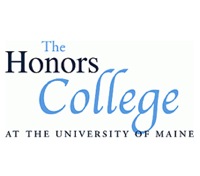Below is a summary of the abstract you submitted. Presenting author(s) is shown in bold.
If any changes need to be made, you can modify the abstract or change the authors.
You can also download a .docx version of this abstract.
If there are any problems, please email Dan at dar78@pitt.edu and he'll take care of them!
This abstract was last modified on March 17, 2024 at 2:23 p.m..

The prevalence of antimicrobial-resistant (AMR) bacteria is on the rise, causing approximately 2.8 million infections and 35,000 deaths per year in the US alone. Mycobacterium abscessus causes various skin, soft tissue, and broncho-pulmonary infections. These infections are challenging to treat due to their antibiotic resistance, with an average treatment success rate of 45.6%. Mycobacteriophages (phages) are viruses that specifically infect mycobacteria. Investigating novel phage and their host interactions offers opportunities to develop alternative treatments. The Science Education Alliance-Phage Hunters Advancing Genomics and Evolutionary Science program recruits young researchers to isolate and characterize novel phages. We isolated two temperate mycobacteriophages, Stink and Stank, from greenhouse and farmyard soil samples, respectively. Stink and Stank belong to clusters A4 and E, respectively. Stink’s genome has a length of 51,609 bp and a GC content of 63.8%. It encodes 85 protein-coding genes and no tRNA genes. Stank’s genome has a length of 75,925 bp and a GC content of 62.9%. It contains 149 protein-coding genes and 2 tRNA genes. In host range assays, neither Stink nor Stank were able to infect non-tuberculosis mycobacterial strains including M. abscessus, M. chelonae, M. salmoniphilum and M. marinum. To further understand how these two phages could be useful in a therapeutic context, more testing is required, such as screening for potential host range mutants that can infect pathogenic strains of mycobacteria.
